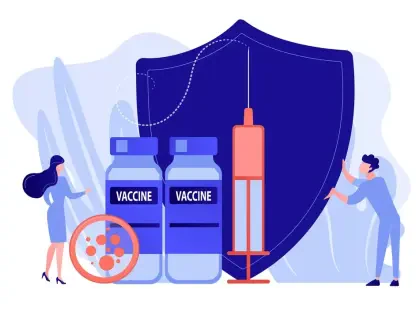Recent shifts within the student loan industry have placed a spotlight on a potential surge in loan defaults as protective measures instituted during the pandemic gradually come to an end. An analysis by the New York Federal Reserve has revealed a significant increase in delinquency rates for federal student loans, soaring from under 1 percent to nearly 8 percent in the first quarter. This alarming trend raises concerns about the financial resilience of borrowers after the expiration of pandemic-era pauses in debt reporting and repayment obligations.
An Overview of the Student Loan Industry
The student loan sector forms a crucial part of the financial landscape in the United States, providing essential funds for educational pursuits. Currently, it encompasses a vast array of private and federal loan options tailored to meet the diverse needs of students across the nation. The industry is characterized by several key segments, each influenced by various economic and social factors. Major players in the market include federal institutions and private lenders, who are guided by stringent regulations to ensure fair practices. The significance of this sector lies in its ability to empower students to pursue higher education, often regarded as a gateway to improved economic prospects.
Trends and Projections in Student Loan Repayment
Key Trends Influencing Borrower Behavior
The resumption of payment reporting has markedly influenced borrower behavior across the country, with delinquency rates varying significantly by region. Southern states exhibit higher delinquency rates, with Mississippi and Alabama seeing the most pronounced struggles, whereas northeastern states such as Illinois and Massachusetts have fared better. Changing consumer behaviors, driven by evolving economic conditions and market dynamics, play a pivotal role in how student loans are managed. As borrowers adapt to these changes, lenders need to closely monitor these trends to better anticipate and address emerging challenges.
Market Data and Future Outlook
Recent statistical data showcase alarming increases in delinquency rates, which serve as a harbinger of potential financial distress among borrowers. Historical comparisons reveal how these rates align with broader economic cycles while shedding light on the unique impact of recent regulatory changes. Forecasts suggest that without targeted interventions, these delinquencies could contribute to even greater challenges in the consumer debt landscape. Despite the risk, there remains cautious optimism for future growth bolstered by strategic industry reforms and innovations that prioritize borrower support.
Challenges Facing Borrowers and Lenders
Both borrowers and lenders grapple with significant challenges, chiefly arising from ongoing economic pressures and regulatory shifts. Borrowers are often constrained by financial hardships that limit their repayment capacity, while lenders face heightened risk exposure due to fluctuating repayment patterns. To navigate these challenges, borrowers might consider strategies such as refinancing or debt restructuring. Meanwhile, lenders can explore risk mitigation tactics like enhanced credit scoring models and borrower education programs aimed at fostering financial resilience.
The Regulatory Framework Impacting Student Loans
The regulatory landscape shaping the student loan industry has seen substantial changes, especially with the cessation of pandemic-era pauses in debt-related activities. Compliance requirements continue to evolve, impacting how lenders approach credit reporting and debt collection processes. These regulations require careful navigation to ensure adherence while also facilitating fair treatment for borrowers. The end of temporary protective measures necessitates a closer examination of regulatory policies to safeguard both consumer interests and market stability.
The Future of Student Loan Management
As the student loan industry adjusts to post-pause realities, technological advancements promise to redefine loan management and repayment assistance. Emerging solutions, like AI-driven financial advisory services, aim to provide personalized support for borrowers in managing their loans effectively. Additionally, global economic conditions and potential market disruptors play pivotal roles in shaping the future direction of student debt management. Stakeholders need to remain proactive in leveraging these innovations to ensure sustainable outcomes.
Conclusion and Strategic Recommendations
The rise in student loan delinquencies, highlighted by new data, underscores the need for an adaptive approach in addressing underlying causes. Stakeholders could foster more collaborative efforts, engage in policy advocacy, and invest in technology to enhance repayment ease. Encouraging financial literacy among borrowers remains crucial, while lenders might explore innovative risk management frameworks. Future-focused solutions will depend on strategic investments and partnerships that anticipate evolving economic conditions, ultimately contributing to a more resilient student loan ecosystem.









